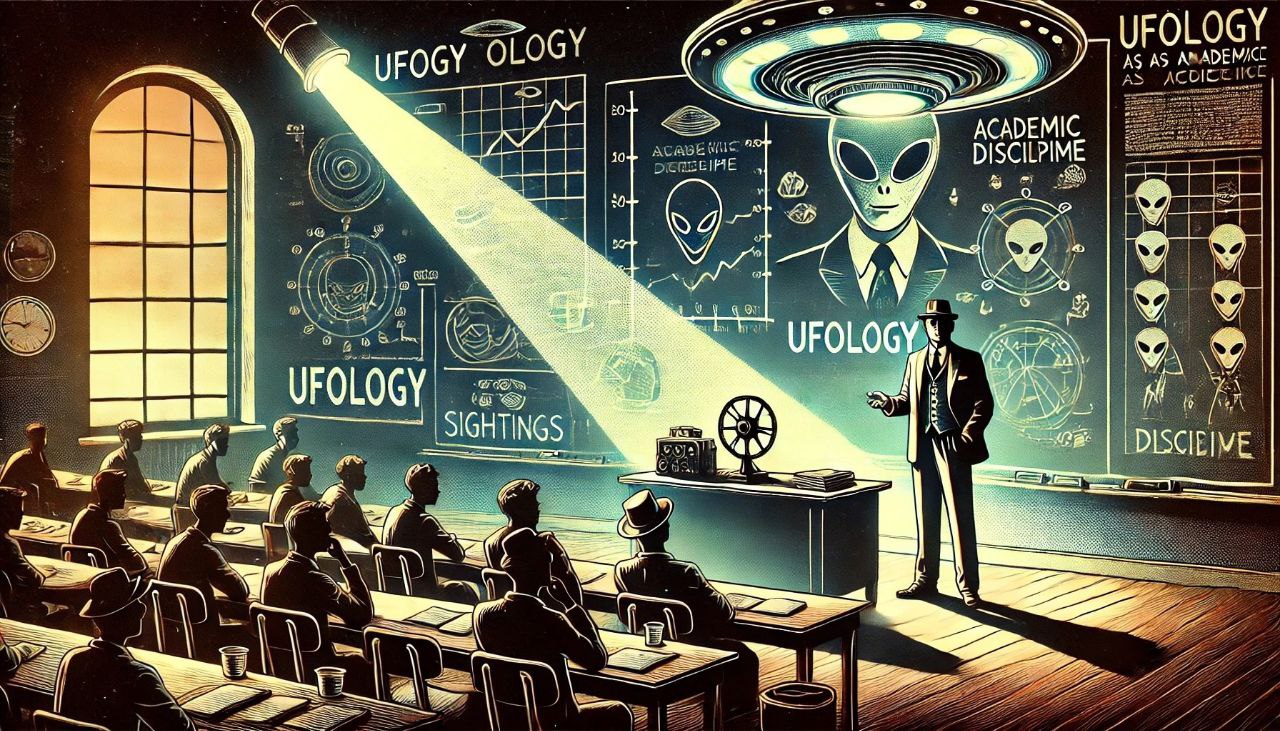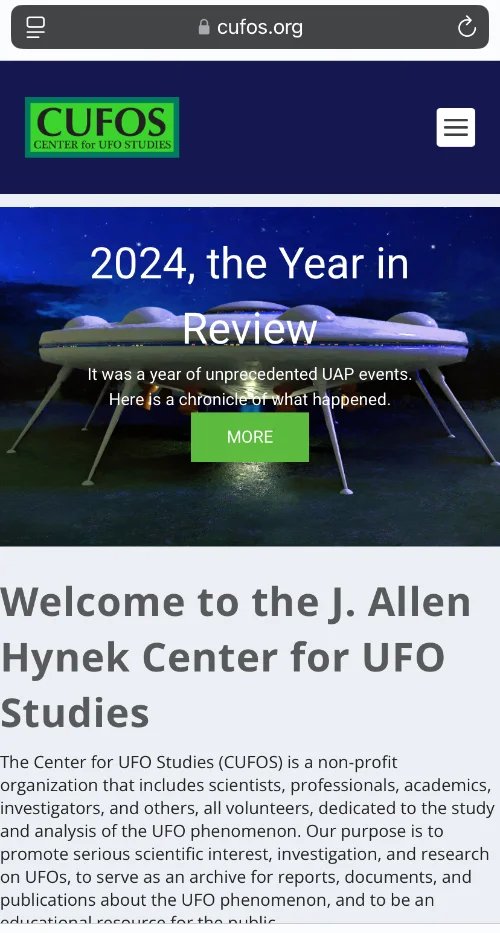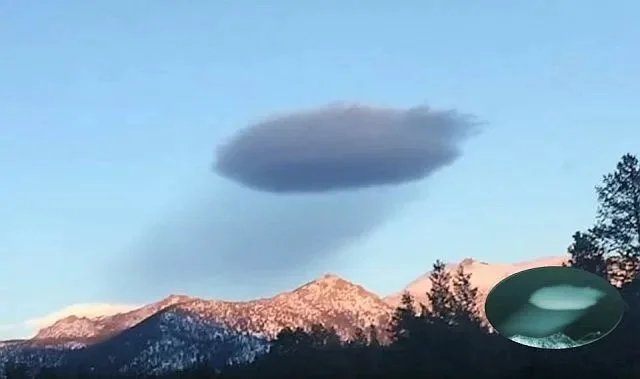Ufology as an Academic Discipline? UFOs: Where Myths End and Science Begins

On February 13, 2025, the Telegram channel “UFO: Alien Attack” published news with a link to the Spanish portal “MysteryPlanet,” with the sensational headline: “Swedish University Announces Launch of First University Course on the Phenomenon ‘UFO: From Conspiracy to Science.’”. Our team became interested in this topic and decided to verify the information.

The citation structure of the source suggests to the reader that this is about a bachelor’s program, as in one place, the author refers to the subject as a “program,” and in another as a “course”: “As part of the program, students will have the opportunity to visit the Archive… The course will involve well-known experts…”
However, after accessing the source and following the hyperlink, we discovered that the article on the Spanish portal is referring to a subject rather than an entire educational program.

We also found confirmation of this on the official website of the Faculty of Education at Linköping University (Sweden, Linköping), where the subject is called “UFO – från foliehatt till forskningsämne” (“UFO – From Tin Foil Hat to Research Topic”), and its curator is Professor Henrik Nordvall. The course description on the university’s website is as follows: “This course is entirely dedicated to how UFOs (Unidentified Flying Objects) and ideas about extraterrestrial intelligent life can be understood in connection with various research traditions and knowledge perspectives.” (Kursen handlar om hur UFO (oidentifierade flygande föremål) och idéer om utomjordiskt intelligent liv kan förstås i relation till olika forskningstraditioner och perspektiv på kunskap.)
Our analysis of the curriculum description, posted on the website, showed that the course is interdisciplinary (it is an elective subject, worth 7.5 credits, and is scheduled for the spring semester of the 2024-2025 academic year). By the end of the course, students will acquire the following knowledge, skills, and abilities:
-Describing and comparing various scientific approaches, issues, and research methods related to the topic of UFOs;
-Discussing the topic of UFOs in historical development;
-Drawing independent conclusions based on a critical evaluation of sources and various types of information about UFOs.
Thus, our verification of the news posted on the Telegram channel “UFO: Alien Attack” indicates that the fact mentioned in the news is not fully confirmed by the original source (the elective subject and a full-fledged bachelor’s/master’s program, which the author indirectly suggests, are entirely different things). However, it can still be categorized within the methodology of the #STUDFACTCHECK project as “mostly true.”
The UFO phenomenon undoubtedly holds great interest for scientific research. The news of a special course developed at Linköping University — one of the oldest and most respected universities in Sweden — and the publication on the “MysteryPlanet” portal prompted us to delve deeper into the essence of this phenomenon and explore the possibilities of a scientific approach to the given issue.
As mentioned above, the UFO topic has been a subject of debate for decades and draws attention from both the general public and experts in various fields of scientific knowledge. The issue includes several levels of interpretation: the popular-science aspect, associated with the mass interest in mysterious phenomena, and the scientific aspect, which concerns the search for an explanation of the phenomenon within existing knowledge.
Are There Extraterrestrial Civilizations? The Fermi Paradox
Since the beginning of the space age, scientists have answered hundreds of questions related to the Universe, and thousands remain unanswered. One of these was formulated even ten years before Yuri Gagarin’s space flight: do extraterrestrial civilizations exist? Here, it is essential to mention the famous “Fermi Paradox.” This scientific hypothesis, formulated by the great physicist and Nobel laureate Enrico Fermi in 1950, raises the question of the contradiction between the high likelihood of extraterrestrial life in the Universe and the absence of clear signs of its presence on Earth. If Earth’s conditions are not unique, and, given the number of planets outside the Solar System, this is quite likely, then over millions of years, other civilizations might have emerged and developed to space-level technologies. Why, then, do we not see evidence of extraterrestrial life: where are the satellites, radio signals, or spacecraft? Convincing arguments for the existence of life in other star systems, based on knowledge of the Universe, are faced with the lack of evidence. However, reflections on the vastness of the known part of the cosmos, even without evidence, have led many scientists to conclude that extraterrestrial life may exist.

“Many educated and world-renowned scientists do not believe in the existence of animals on planets because no one has seen them, and they do not announce themselves. Europeans once thought that America and its people did not exist. No one has seen atoms, yet they undoubtedly exist. The same can be said for solid grounds to be fully confident in the existence of countless celestial residents,” wrote Konstantin Tsiolkovsky in his 1933 article “Planets are inhabited by living beings,” asserting that there are too many stars and planets in the known Universe to confidently deny the possibility of life arising on them. https://scientificrussia.ru/articles/paradoks-fermi-est-li-zizn-vne-zemli
To get an expert opinion, we turned to Alexander Igorevich Malychev, Dean of the Faculty of Physics at Nizhny Novgorod State University, Ph.D. in Physics and Mathematics.

“We must first define what UFOs are. They are Unidentified Flying Objects, meaning something that is flying through the air, and we do not know what it is. In this sense, UFOs often conceal natural phenomena. For example, we see an object flying across the sky, creating a bright flash, and we don’t know what it is, so it’s a UFO. On the other hand, if we gather more information, facts, and eyewitness accounts, we may realize that it’s not a UFO but a meteoroid — an ordinary natural phenomenon.
Given this, studying UFOs from a scientific perspective is entirely acceptable. If there are any unexplained facts, let’s study them, analyze them, and find out what they are. Ultimately, science analyzes any phenomenon based on what? We observe, record, measure, build models, and then, perhaps, conduct controlled experiments. We intervene in the system, observe its reactions to our actions, and thus identify certain patterns, based on which we formulate physical laws. The same goes for UFO facts. If we had the opportunity to thoroughly investigate a phenomenon and realized that we couldn’t explain it scientifically, it would become a significant challenge for science. Then, we would need to study it more carefully, think, and possibly create new theories, and so on.”
It is important to note that the perception of UFOs in the public consciousness is shaped by various types of interactions with unidentified objects. For instance, astronomer Joseph Hynek developed his own classification system for UFO encounters, which helped structure and analyze numerous testimonies and observations.
Joseph Hynek: UFO Contact Classification
Joseph Allen Hynek, the famous astrophysicist and ufologist, played a key role in UFO research, especially in the “Blue Book” project. He was invited as an expert to analyze UFO reports and was initially a skeptic. However, after studying numerous unexplained cases, he became convinced of the need for serious investigation into the phenomenon.
The primary task was to collect and catalog all UFO sightings in the U.S. After processing the data and assigning numbers, the information about the sightings was sent to invited experts, including physicists, meteorologists, engineers, and psychologists. Each expert would independently study the cases and write a report. Their task was to offer the most rational explanation based on their field of knowledge. Though each of them could not explain everything, often what one expert couldn’t explain, another could. These reports were then sent to the center, and only there did it become clear that a significant percentage of cases (10-20%) remained unexplained. Especially if the sources were reliable (mentally healthy individuals, preferably military personnel), and if there were witnesses (either having observed the object together with the person reporting it or having seen the same object in different locations), real work began. While the U.S. Air Force was most concerned with the percentage of explained facts, the scientists were more intrigued by the percentage of cases that couldn’t be explained. In this sense, the work progressed in such a way: experts from various fields encountered what could be called the “reverse side,” which was inaccessible to their science, and then researchers overseeing the project looked for the reverse of the reverse side (what remained after summing up all the explanations).
As mentioned earlier, Hynek also introduced a classification system for UFO contacts. First, contacts were divided into “close” and “distant.” Secondly, within each of these types, he distinguished three kinds.
In distant contacts, there are: 1) night lights, 2) daytime discs, and 3) objects appearing on radars. Hynek emphasized that he did not claim that night lights were simply the same objects as daytime discs, just seen at different times of day.
“Close encounters of the first kind” occur when an observer sees a strange object (for instance, a strange light) but is able to view it in more detail, such as describing its shape or drawing it.
“Close encounters of the second kind” occur when the observer sees not only an unknown object but also becomes a witness to physical evidence of its presence, such as unusual animal behavior, strange traces on the ground, or burns on the body.
“Close encounters of the third kind” occur when the observer sees not only an unidentified object but also its inhabitants, like in Steven Spielberg’s 1977 movie.

After the closure of the “Blue Book” project in 1969, Hynek founded the Center for UFO Studies (CUFOS) in 1973, which is still operating today. CUFOS is a non-profit organization dedicated to the scientific study and analysis of UFOs. Its goal is to promote serious research into UFOs, compile archives of reports, documents, and publications on the phenomenon, and serve as an educational resource for the public. https://cufos.org
The Center’s website contains a vast number of materials, including original observation reports, investigations, and official government documents. Among the publications available from CUFOS are all issues of the International UFO Reporter periodical, the scientific Journal of UFO Studies, as well as CUFOS bulletins, newsletters, and monographs. In addition, the website features an extensive chronology of UFO-related events, educational resources on the UFO phenomenon, and publications by NICAP, one of the first major organizations dedicated to UFO research. https://cufos.org/

The topic of UFOs remains one of the most controversial and multifaceted fields in both the scientific community and the media space. With the rise of the internet, many bloggers and content creators have attracted millions of followers by spreading ideas about global conspiracies and alternative theories about the origin of unidentified flying objects. Fake photos and videos allegedly capturing mysterious objects in the sky have become widespread. Furthermore, instructions on how to create images that imitate UFO sightings have even appeared online.
Undoubtedly, the media plays a key role in shaping public perceptions and highlighting various topics in popular culture. Serious analytical publications strive to cover events from a critical and objective standpoint, aiming to minimize subjective interpretation. During a media analysis, it was found that Chinese media outlets demonstrate the most balanced and well-reasoned approach to the topic of unidentified flying objects. This analysis helped to better understand how Chinese media reports on this subject and the significance it holds for a broad audience.
China’s information space is regularly filled with news reports about various UFO sightings witnessed by the public, including:
十年前轰动全国的萧山机场UFO事件始末,为什么过后却很少提及? “Why is there so little mention of the UFO incident at Xiaoshan Airport, which shocked the country ten years ago?” https://www.163.com/dy/article/GG0U7AH20543G67G.html
千面科学|UFO与飞碟:从冷战阴谋论到流行文化符号 “UFOs and flying saucers: from Cold War conspiracy theories to pop culture icons” https://www.thepaper.cn/newsDetail_forward_10965081
美媒:五角大楼官员称“没有可靠证据”显示存在外星UFO活动 “U.S. Media: Pentagon officials state there is ‘no credible evidence’ of extraterrestrial UFO activity” http://www.news.cn/mil/2023-04/23/c_1212170454.htm
天津机场UFO事件,情况和14年前萧山机场相似,3种猜测让人发凉 “Tianjin Airport UFO incident similar to the one that occurred at Xiaoshan Airport 14 years ago – three theories send chills down people’s spines” https://www.163.com/dy/article/JBTEMI650511F2M4.html
However, Chinese media aims to carefully investigate these incidents and offer scientific explanations for the observed phenomena. A vivid example is a publication on the Netease portal: “Unidentified flying objects spotted in many locations, leaving behind snake-like clouds that officials say are not of natural origin – what is it?” https://www.163.com/dy/article/JLNR7IAG0532GP5D.html This article, dedicated to mass sightings of UFOs leaving characteristic serpentine trails in several major Chinese cities, offered a detailed analysis. The cause was determined to be the launch of a rocket from the Baikonur Cosmodrome in Kazakhstan, providing a comprehensive explanation for the unusual phenomenon.
Another article from the news portal newz.sina.cn: 济南七星台 “不明飞行物” 事件始末:六天拍到三次UFO说法难立足, titled “Unidentified flying object recorded three times in six days by ‘Seven Stars’ Astronomical Observatory in Jinan: incident details” https://news.sina.cn/gn/2023-09-14/detail-imzmsfwa7332554.d.html, also provides a rational explanation. The Jinan Observatory detected traces of a “UFO” three times in six days. According to media reports, Niu Guihua, vice president of the Shandong Astronomical Society and secretary-general of the Jinan Astronomical Society, stated that all three objects could be considered UFOs. However, astrophysicist Liu Boyang questioned this conclusion, suggesting that the objects captured by the observatory were likely the result of the multi-frame overlay function used to reduce noise during nighttime shooting with the Hikvision 3T47 camera. Amateur astronomer Zhang Liang conducted an experiment confirming the astrophysicist’s hypothesis.

Our respected expert, Alexander Igorevich Malyshev, also warns against hastily categorizing various naturally explainable phenomena as part of the “UFO phenomenon.”
– What atmospheric phenomena can be mistaken for UFOs?
– First of all, there are various types of atmospheric lights. The upper atmosphere contains an ionized region known as the ionosphere, which can emit light visible from Earth’s surface. A related phenomenon is known as “sprites” — a form of lightning that differs in appearance from typical lightning and can be observed during thunderstorms. Another fascinating example is lenticular clouds, often formed over mountain peaks. These lens- or saucer-shaped clouds appear stationary despite strong winds, creating the illusion of a flying saucer hovering above a mountain. In reality, it’s simply a special cloud formation caused by the mountain’s presence.
Mirages are another example — an optical phenomenon not limited to deserts but observable even in temperate regions during hot summer weather. For instance, sun-heated asphalt can create a thin layer of hot air that significantly differs in temperature from the surrounding atmosphere. This hot air causes light to bend, producing a visual illusion of objects in the distance that aren’t actually there.
Our team has repeatedly explored the fascinating topic of space. For instance, in 2023 we produced a segment on the potential for biological life to exist on Saturn’s moon Enceladus, which can be read on our official website: https://studfactcheck.ru/life-on-enceladus-blogpost. The basis for that feature was an article published by Xinhua News Agency, covering the research of Professor Hao Zhihua and other scientists at the University of Science and Technology of China.
Conclusion
Today, UFOs represent a unique challenge for modern science, offering researchers the opportunity to delve deeper into the mysteries of natural laws and significantly expand the boundaries of human knowledge. Studying these phenomena may lead to revolutionary discoveries that could fundamentally alter our understanding of the universe and humanity’s place within it. Specifically, the hypothesis of extraterrestrial civilizations stimulates scientific progress aimed at developing new methods for exploring space and deepening our understanding of complex astrophysical processes.
However, this scientific enthusiasm also raises certain concerns. Imagine we discovered the existence of another civilization — what then? We discussed this timely and complex question with Alexander Igorevich Malyshev.
— In the past, when people asked whether life exists elsewhere in the universe, the question led nowhere. Humanity knew that life couldn’t exist on stars — stars are thermonuclear reactions, after all. And just 30 years ago, we lacked the technology to observe planets that might orbit those stars. Now, however, we have confirmed the existence of nearly 7,500 exoplanets — planets beyond our Solar System — and there is reason to believe that our galaxy alone could host around 300 million Earth-like planets located in the so-called “habitable zones” of their stars. Knowing this, we must ask: “Can we really be alone in the universe?” We have not seen the limits of the universe, and if it’s infinite, then there are infinite galaxies. It’s quite plausible to assume we’re not the only inhabitants of the cosmos.
This question is not only actively debated in scientific circles, but also inspires creators of artistic works who bring the issue into public consciousness.
— I’ve read the novel The Three-Body Problem by Chinese writer Liu Cixin (part of the “Remembrance of Earth’s Past” trilogy), and watched the series. The story addresses this issue: a technically superior civilization is discovered, and we learn they’ve launched a fleet heading toward us. Even if they arrive in 400 years, when we’re long gone, the question remains fundamental. Perhaps we should worry about what they intend to do with us? Maybe it’s better not to send any signals to anybody at all?
Authors: Anna Kuneva, Ulyana Obolenskaya, Liang Nenshuang, Daria Nazarova, Daniil Builov, Alyona Manina.